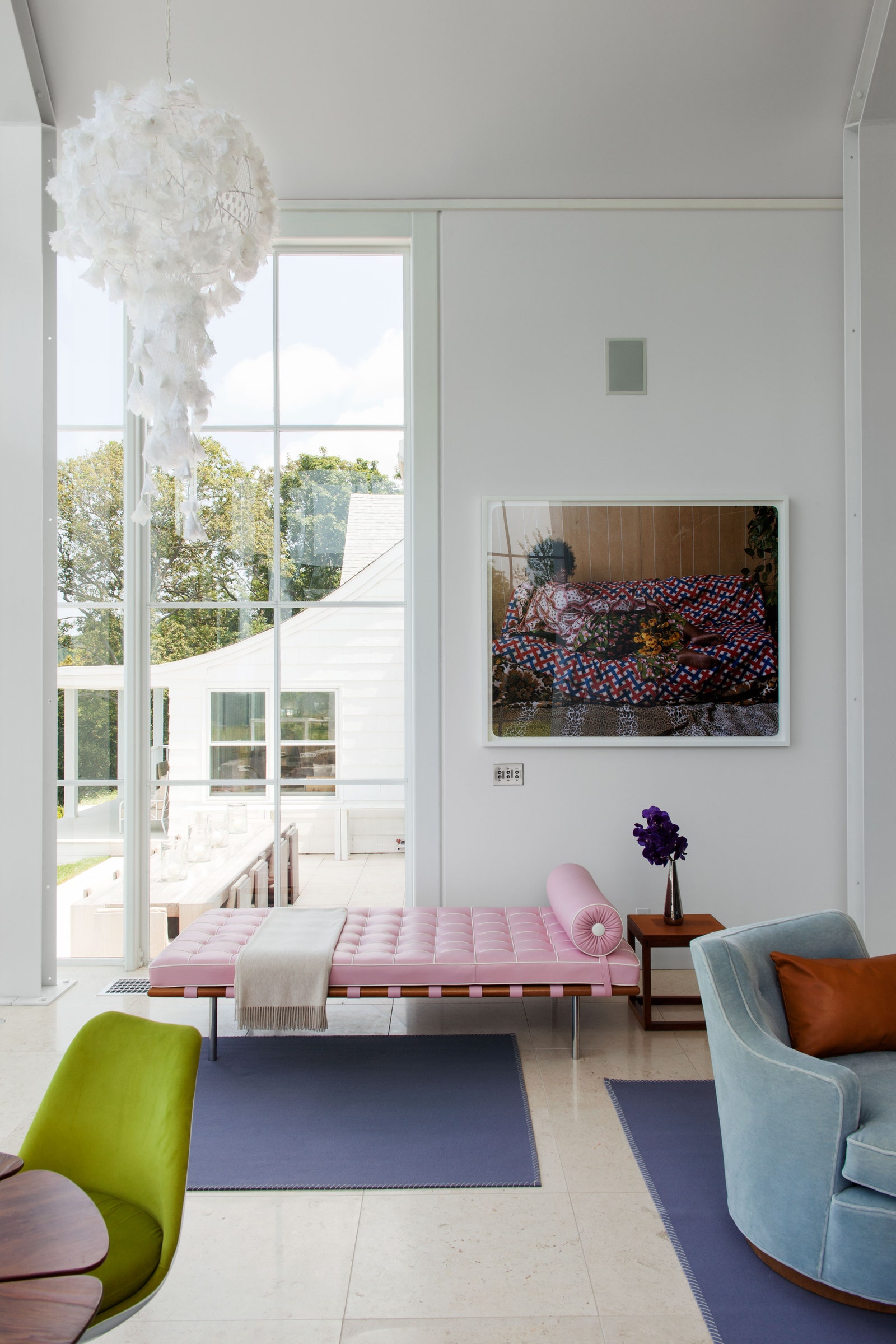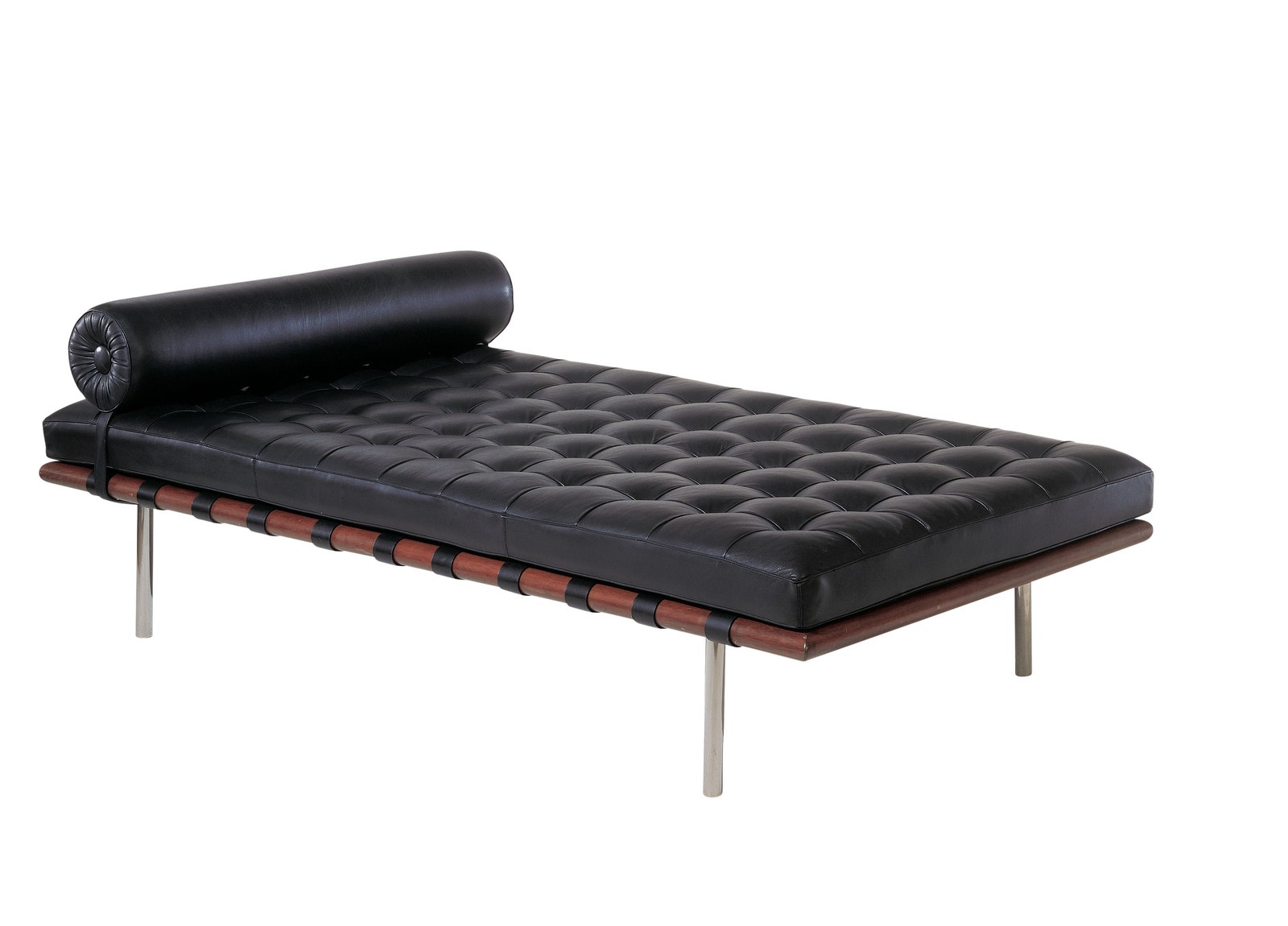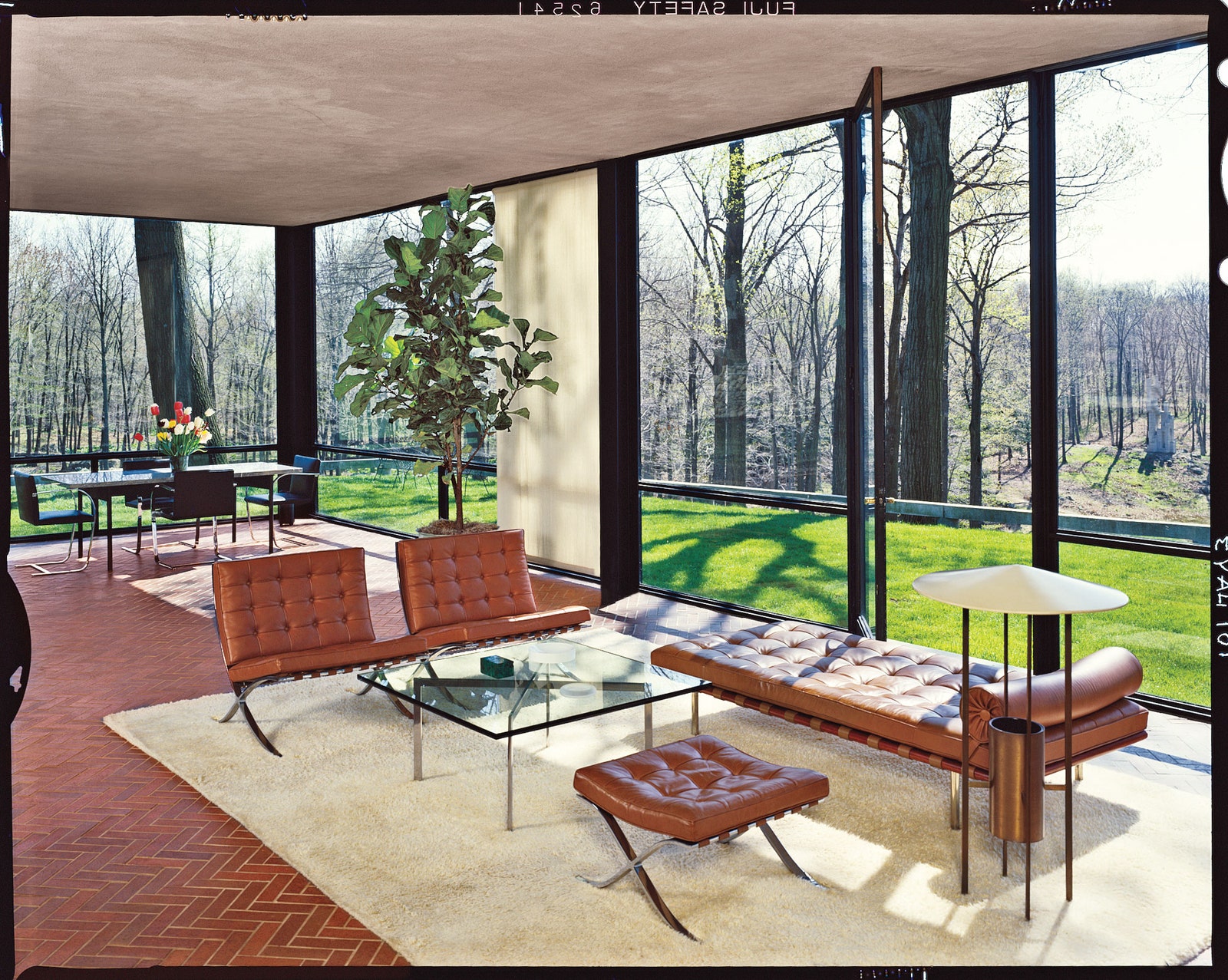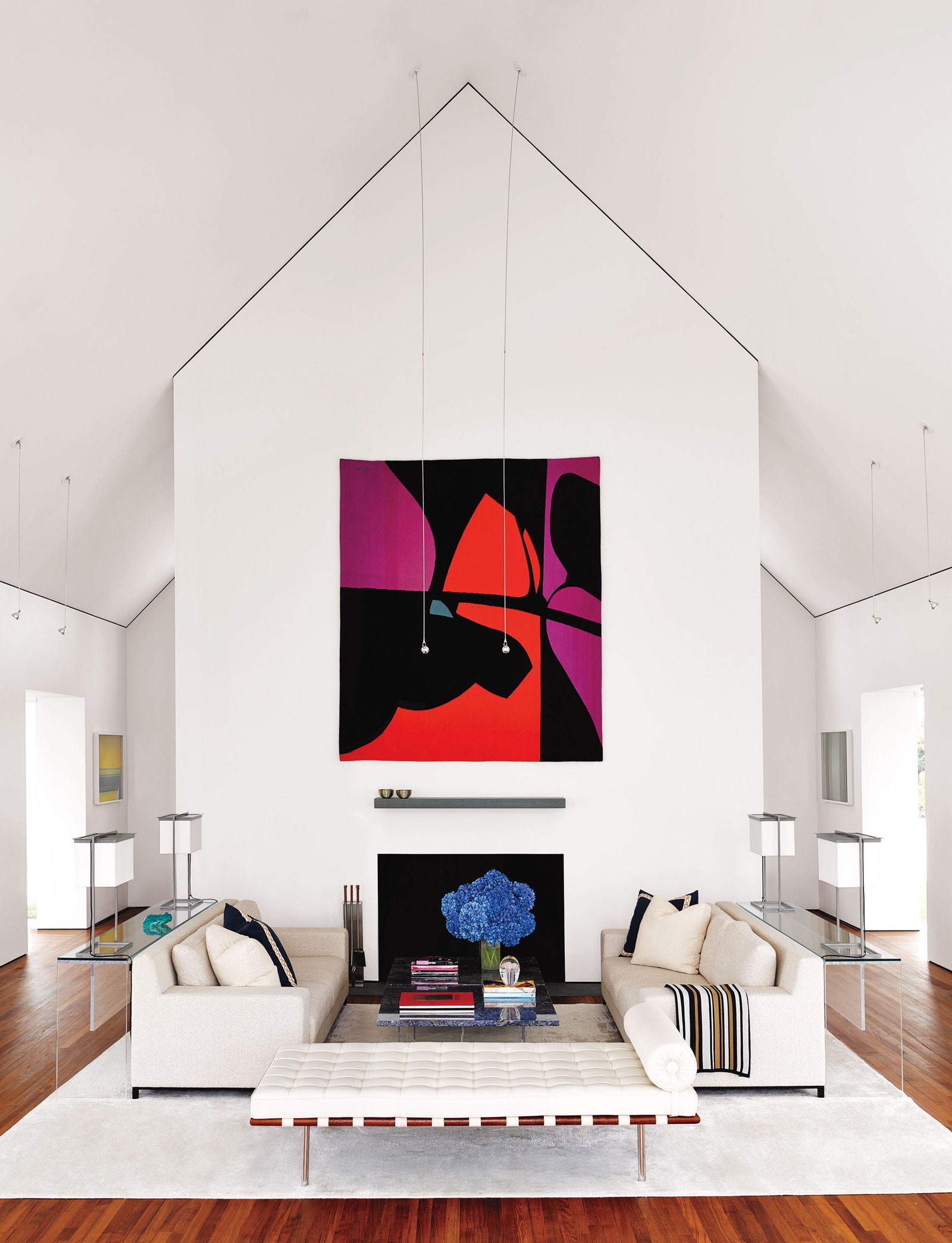In 1930, little-known American architect Philip Johnson asked cutting-edge German talent Ludwig Mies van der Rohe to design his New York City apartment.
Mies was busy: He had just erected the Barcelona Pavilion, completed Villa Tugendhat, and been named the director of the Bauhaus. But he accepted what was more or less an interior-decorating commission, as an opportunity to employ some of his newly minted furniture designs Stateside. The project, it turned out, would render yet another Miesian icon, its given name as no-nonsense as its form: Couch.
A pink Barcelona at Knoll CEO Andrew Cogan’s Shelter Island retreat.
Roger DaviesThe sleek piece—a hand-tufted cowhide cushion and single cylindrical bolster laid on an African-mahogany platform with tubular steel legs—was wildly useful in the small apartment.
Knoll’s basic black model.
“It’s an extremely simple way of delineating space,” explains Paul Galloway, MoMA’s collection specialist, architecture and design. “It could sit against the wall or by a window. And because it’s low, it didn’t block the space.”
It was Johnson’s next place, however—the famous Glass House completed in 1949 in New Canaan, Connecticut—where the couch got the most publicity. Here the piece’s low profile allowed a clear view out the windows to the sweeping vista beyond. Needless to say, it quickly rose to cult status.
In chestnut leather at Philip Johnson’s glass house.
Norman McgrathExpensive and difficult to make, the couches were manufactured in minuscule batches in Berlin until 1964, when Knoll took over production (a new one costs around $10,000). In fact, it was Knoll—not Mies—that awarded the sofa the name Barcelona in 1987, for its marked resemblance to the Barcelona chair and stool designed for an international exhibition in Spain in 1929.
Architectural designer Simon Jacobsen used a creamy couch in this Nantucket home.
Douglas FriedmanWhile the early editions go for serious sums at auction, “even without the cushion,” notes Galloway, “it’s strictly due to rarity. The Knoll ones are actually better made.” Today’s come in a variety of colors and customizations, including one rather surprising rendition found in the Shelter Island home of Knoll CEO Andrew Cogan: a snappy version in pink. knoll.com




